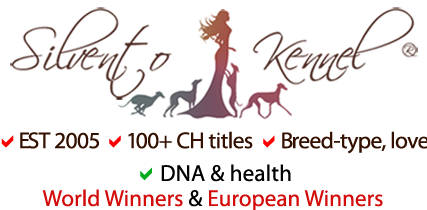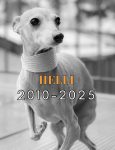According to your dog knowledge and personal experience, which are the most important elements in order to judge correctly?
My strong believe is that, no matter what breed you judge, type and overall balance is the absolutely most important. That, of course, includes the movement. The judge must have a great knowledge of the standard, of course, but even more important is a good knowledge of the breed status. That means that, if you judge a breed, you must have interest and passion not only to learn the standard, but also be aware of the situation and the evolution of the specific breed. I think that, without having a passion and REAL and true interest for the breeds you judge, you will not be able to do a good job.
Judging an IG, which is your method to evaluate the type to search and award?
Since I had the fortune to grow up and live with this wonderful breed for more than 40 years, now I would answer that the elegant curves, flawless lines together with the so special and characteristic movement are what I always first would like for. The IGs are difficult to judge, since they really can change shape, just depending on handling, weather and mood.
Trying to tell the “Thing” which makes the “Outstanding Achiever”, you can say that…
…for my personal taste, an “outstanding” IG must have the elegance and correct bone structure, as well as beautiful lines and correct angulations in both front and rear, which hopefully will give also the so typical high neck carriage and elastic “dancing” and effective movement.
Unfortunately, there are very few specimens which really fit into all this. We see too many dogs today with lack of elegance and lack of true sighthound type. We must always remember that the IG is a little sighthound and, as a judge of the whole group 10, I can for sure say that few judges would accept the unsoundness in any other breed, that we often see in our breed and that so often is left without any penalizing. To make some examples: “French” fronts, wide elbows, straight toplines, no rear angulations, unsound movement, wrong bites and canine teeth, missing premolars etc.. Today discussion is mostly about size and colour. I think that there are so many more problems we should consider when judging and breeding. Honestly, I strongly feel that the defects which can give the dog problems in normal life, are the most important to eliminate. No IG suffers from wrong colour or some cm more or less. I don’t mean that we should not care about size and colour, but I seriously think that it should be considered as a fault like everything else.
Concerning the IG movement: how does a judge face the “reading” of the standard and its “interpretation” into the ring?
This is a difficult matter, since in our breed the standard was changed from “high stepping” to harmonic and elastic and today the highstepping is considered as a grave fault. We can now see all kinds of movement among the European IGs (the American standard still asks for highstepping movement) and this makes it difficult for both breeders and judges. I personally think that it would be a great idea to extend the standard a bit, and explain more clearly how the IG should move. I think most of us want to see the typical “dancing” movement, with slightly bend of pastern when lifting the front leg, but without losing the good reach forward as well as good drive in the rear. We definitely don’t want the IG to move like a greyhound or whippet! How could they? They are completely different constructed in their front angulation and with different neck set.
“Technical” ring in the morning, “show” ring in the afternoon: how important and how difficult to put in agreement both of them?
My personal answer would be that the judging in the breed ring is the most important and that you, as a judge, always should remember how your work affects the breed. If you only choose dogs which you think would be “showy” in the big ring- you might do more harm than good to the breed. Every judge must be aware that, when stepping into the ring, he has a great responsibility, not only towards the people, the breeders and the exhibitors which entered, but also to the breed itself!
This article was provided by Julia Paju
Journal Bollettino (12/2007)
Сircolo del Piccolo Levriero Italiano



